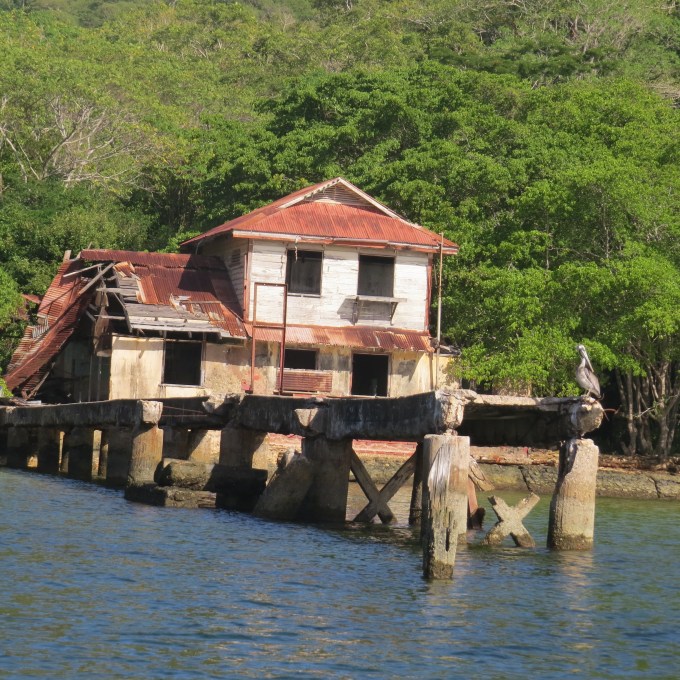Lepers and Lighthouses - Pt. 1
/Exploring Chacachacare Island, Trinidad
Chacachacare Island is only 7nm from Chaguaramas, but it's a whole different world here. It's calm and quiet (at least during the week) and it's steeped in local history. In the past, the island has been a tobacco and a cotton plantation, a whaling station, a leper colony and a base for US troops during WWII. We explored the island with friends when we visited Trinidad in 2002 . We decided to take time from our task schedule (read that Marcie convinced the captain) to make a couple of early morning forays ashore and explore again. Our memories being what they are, it was a whole new experience this time.
From Nine of Cups' deck, we could see a dilapidated building that time, weather and vandals have nearly destroyed. A decrepit, old cement jetty, reputedly from the old whaling station, is now unusable except by a squadron of perching pelicans.

We dinghied ashore, picked our way carefully through the detritus, rubble and mounds of litter to check it out more closely. There wasn't much to see. A faded sign informed us that the Dominican nuns had established a leper colony on Chacachacare Island in 1924. The adjacent map was so faded, it could not be read. Any existing paths were long since overgrown. Incidentally, this was the leper's island that Papillon had escaped to … the nuns turned him in to the officials.
Through the dense jungle foliage, remains of other old buildings could be seen. A stone staircase climbed to nowhere. Piles of debris, plastic bags and bottles were strewn everywhere … it wasn't a pretty sight. But the gravel beach was a great place for finding smooth, colored sea glass ...mostly green.

Across the bay, we could see three large buildings straddling the hillside. Even from a distance, they appeared abandoned. These were the main buildings of the leprosarium and included the nunnery, a hospital and a chapel. We dinghied over, tied up at a small, covered dock and climbed up a steep, but well-defined, shady, stone-step path to inspect the buildings. Small lizards rustled in the leaves and skittered across our path. It smelled damp and earthy.

These buildings were in sad shape, too, but better condition than those across the bay. Graffiti covered the walls... inside and out. A sign warned us of asbestos, but honestly, there was more chance of the building collapsing on us than of contracting asbestosis. Floorboards were torn out or rotted; doors yanked from their jambs; the foundation and walls were crumbling.

We proceeded up the path to the chapel. It was quite ornate, especially for nuns, with some of the gingerbreading still in situ. When we were here last time, there were still small shards of stained glass in the windows. This time, nothing was left.

The plastered walls of the apse were disintegrating and leaves covered the concrete floor, but the graceful roof structure remained intact.

The hospital was not easily accessible. What the jungle had not overtaken, vandals had. We gave it a pass.

Further up the path, in a quiet, fenced area overlooking the bay, was the nun's cemetery. Above each of the ten stone-covered graves, a small plaque showed the name, birth-death dates and place of birth for each Dominican nun who had died on the island.

It's interesting, but eerie walking around in a place like this. As we descended the path back to the dinghy dock, a vulture perched on the top of the roof and eyed us furtively. Time to head back to Cups. Our next foray will be climbing the steep road to the lighthouse on another part of the island. Take a breather, have a cuppa and join us tomorrow.

